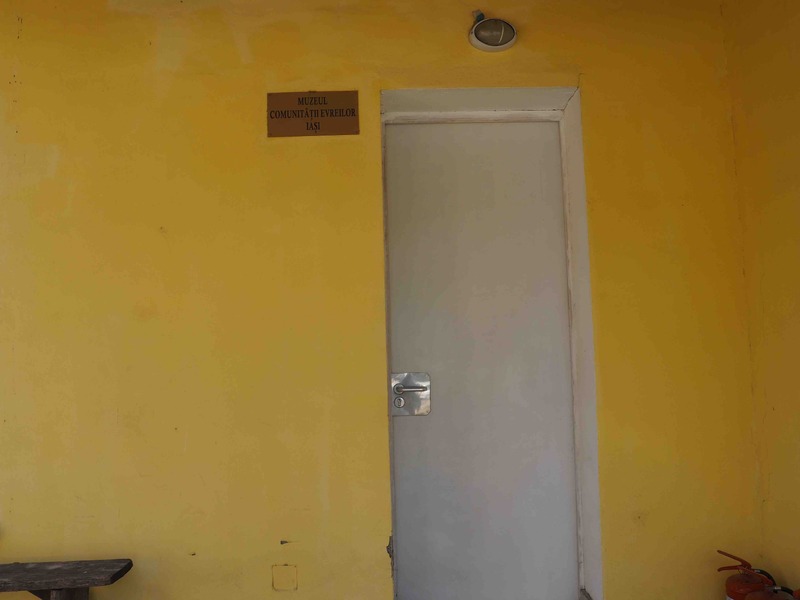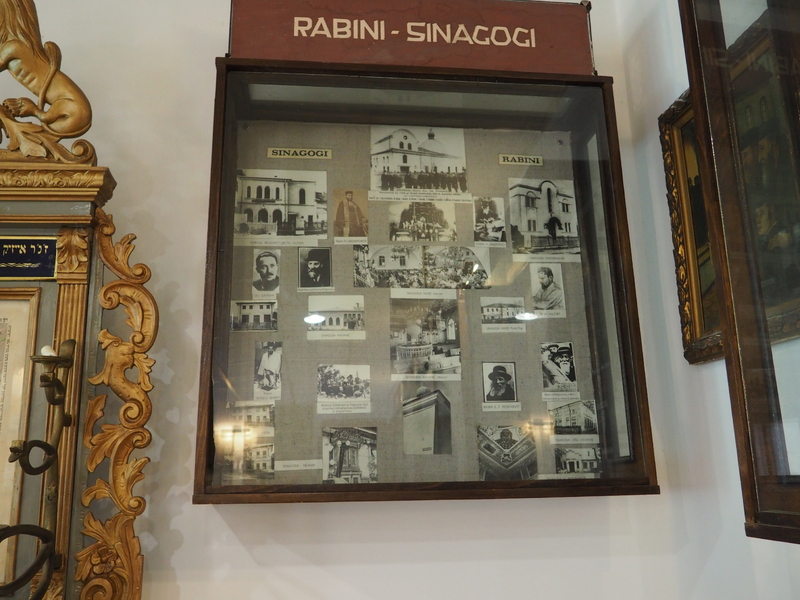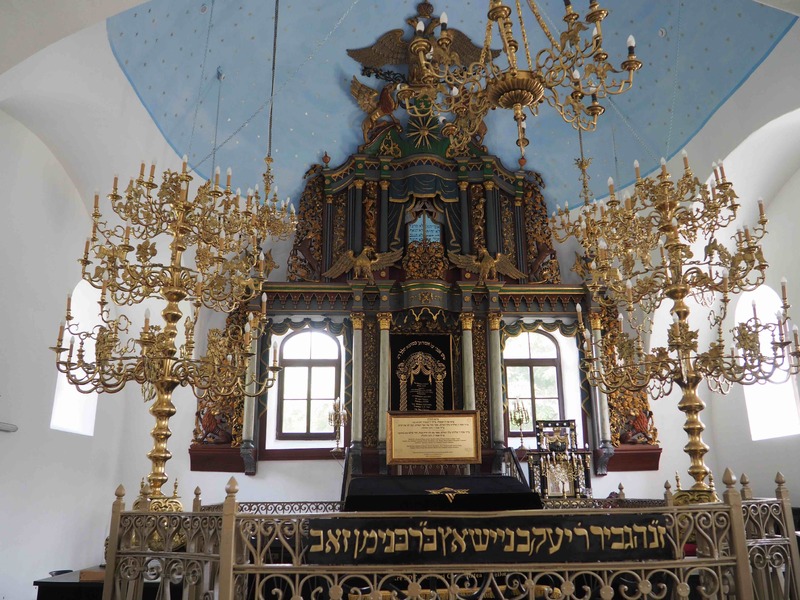Arriving in Iași
A short flight from Bucharest, the tone in Iași is gentler, with a large university at one end of town and many ornate buildings in its downtown core. I arrived in Iași in the middle of the day at a quiet small airport. I found my way to my hotel in the center of town and sat outside in the hote's cafe, feeling finally relaxed and enjoying watching the passersby, in short sleeves and light dresses for the warmth of the still summery September day. I walked up a long street and followed the trolley tracks for many blocks.
Searching for the Jews of Iasi
I found my way to Synagogue Mare, the Great Synagogue of Iași where I met Albert who was inside teaching a young boy. Albert is a local teacher and a Jewish community leader.
First, Albert introduced me to the museum curator who brought me to a small room in a portable style building across from the synagogue. I was immediately impacted by the scant information set in a dusty, dark room with a clear lack of resources to support their work. This community was also my grandmother's birthplace and the place where my family had ties and lived for unknown centureis. The name "Marcovici" is extremely common and appears in scattered places in the displays and documents in the museum. Albert told me that most of the documents relating to the jewish history of Romania are at the National Archives and not owned by, and perhaps difficult to access for the Jews of Iași.
The Synagogue Mare was recently renovated. The tiny Jewish center and museum are next door. Albert was kind enought to let me into both synagogues to take photos and talk for a little while. He also invited me to attend the morning minyan (prayer service) the next day. I understood from Albert that there used to be 112 synagogues in Iași, and now only two stand, the rest having been destroyed.



